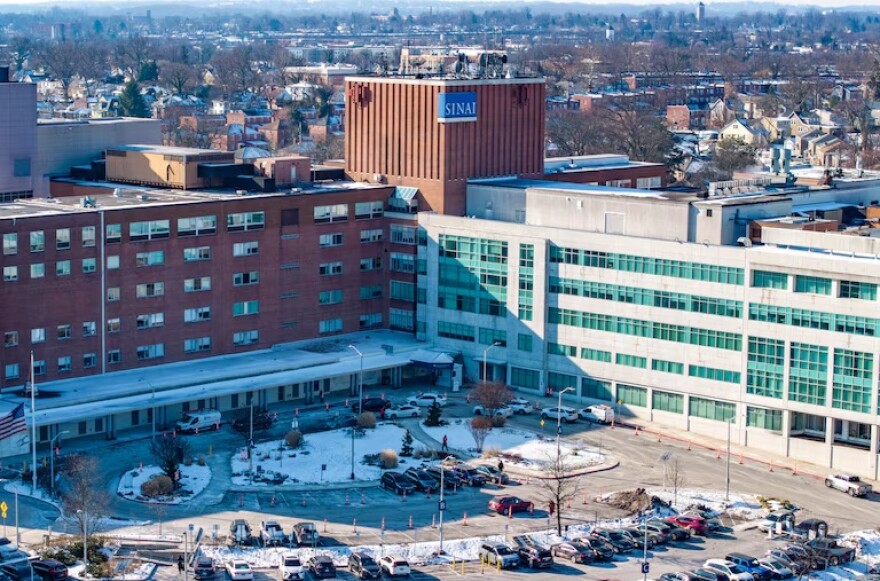Gun violence in Baltimore is on a steady decline. Homicides are down 30% and shootings have fallen 21% compared to the same period last year, according to city data.
At Sinai Hospital, a Level II trauma center, staff say they’re feeling the shift.
Admissions for gun-related injuries have dropped 52%, according to internal figures from LifeBridge Health.
Treating gunshot victims often requires a large response. A single case can mobilize a team of surgeons, nurses, respiratory therapists, and rehabilitation specialists, said Jamie Gannon, the hospital’s trauma program manager.
“When a patient first comes in, it is really a — an innumerable amount of people that care for this one person,” he said.
And these patients vary widely.
“There is no one specific profile,” Gannon said. “We've had kids as young as two, up to adults in their seventies. It truly affects everybody.”

Hospital executives attribute the 52% drop in gun-related admissions partly to the work of Sinai’s violence intervention program. It was among the first hospitals in the state to employ violence responders full-time. The responders are neither medical staff nor are they social workers.
According to Gannon, they visit with patients, ask what led to the incident, and work to disrupt the cycle of retaliation.
Also known as violence interrupters, they are part of a growing movement that treats violence as a public health crisis. The goal is to use these ‘credible messengers' to curb conflicts before they become deadly.
“Quite often, they've survived a gunshot themselves, or they might have served significant jail time,” said Adam Rosenberg, vice president of violence intervention and prevention at LifeBridge Health.” So there’s an in-built credibility when they’re meeting a patient who wakes up, bandaged and patched up.”
Their work is often behind the scenes, which has led to criticism. For example, Baltimore City State’s Attorney Ivan Bates, told WYPR Host Tom Hall, that violence interruption programs, such as Safe Streets, should have clear data that’s publicly available.
“When you're using people’s tax dollars, be as transparent as possible,” Bates said during an appearance on Midday. “In New York, I see them going to roll calls with the police department, walking through hot spots, engaging with the community. Everybody knows who they are.”
Rosenberg said Sinai had partnered with Johns Hopkins School of Public Health to evaluate the effectiveness of frontline violence intervention strategies. But that effort stalled in April when the U.S. Department of Justice — under the Trump administration — cut funding.
The hospital also planned to track online fights before they turned violent in real life, but those funding cuts stopped that too.
Now, advocates are pushing for new funding models to prevent those beds from filling again.
Currently, Baltimore’s community violence intervention (CVI) programs operate on roughly $8 million annually, a fraction of the city’s police $600 million budget. Advocates argue that redirecting some police funding toward CVI programs could further reduce crime.
Rosenberg argued that lower violence rates would also ease the strain on medical systems.
“The tension in the emergency room increases exponentially, when someone shows up after they’ve been shot," Rosenberg explained. "And the answer shouldn’t be, ‘Well, I'll just go to a different emergency room.’ All of these emergency rooms are experiencing gun shot wounds. ”
Sinai backed “Stop the Iron Pipeline" a state law that took effect this month to increase penalties for illegal gun trafficking.
Both Rosenberg and Gannon say, the key to reducing future hospital admissions, is to address violence before it starts. As part of that effort, the hospital is looking to distribute gun locks at the bedside.








